Mold is a fungus that grows in moist areas, such as basements and bathrooms. It can grow in damp areas but thrives best in dark and damp places.
Mold can grow in many places, but it is often found in hidden and hard-to-reach spaces like the corners of your ceiling or inside your walls.
It can be found on any surface where there is moisture, so removing mold from your home is important before it becomes a health hazard. The first step to removing mold you can’t reach is identifying where it is growing.
You must clean and dry the area before treating it with a fungicide or bleach solution. You should also ensure that you are not using toxic chemicals in your home if you have children or pets.
The danger is evident to you and your family; you know its presence. But unfortunately, rubber gloves and disinfectant spray won’t be able to reach it. Do you have any advice for mold-worried homeowners?
Steps to Remove Mold in Hard-to-Reach Places
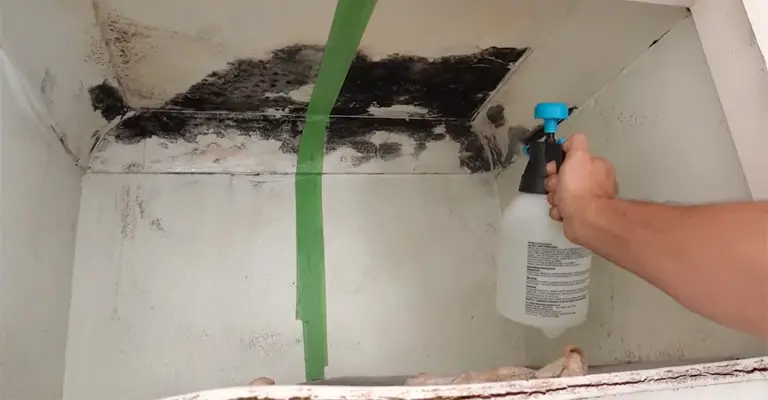
Mold is growing down there, you know. If you run the shower or open your washing machine door, you’ll be able to smell it.
Look closely between the dishwasher and cabinet to see those dark shapes lurking. If you have a small gap between your stairs and the wall, you could put it there.
But, for example, there might be a spot of mold hidden behind the washer and dryer, where the air is always damp and impossible to reach. What is the best way to get rid of it?
It’s hard to see when you’re fighting molds, and impossible to reach them. But, when things get desperate, they can seem impossible. To get every speck of mold, you might have pulled appliances and bolted cabinets away from the wall.
This doesn’t seem like a bad idea at all. Even narrow mold-filled crevices can be disinfected and cleared out with a few tricks up our mold-expert sleeves if you’re not ready for heavy lifting.
Safety First
Remember that mold spores can irritate if breathed in or touched. You should wear a medical mask or bandana over your nose and mouth to protect yourself from germs.
In addition, mold rags or gloves that are used to scrub mold should be worn if you will be handling them.
Trick #1: DIY Swiffer
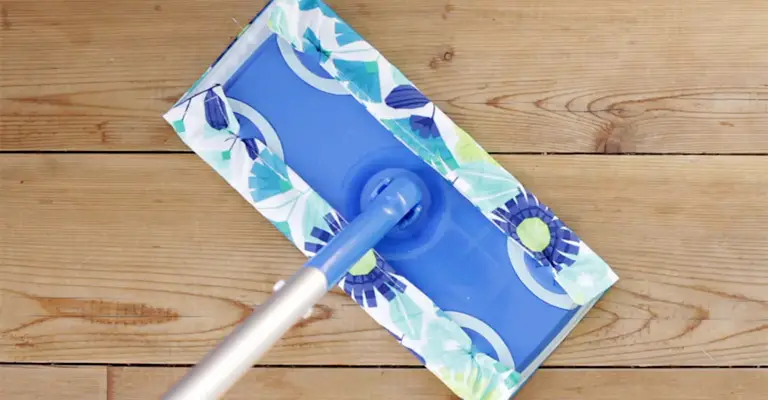
Therefore, we have the space beside the stairs, the groove in the window frame, and the space by the tub. Isn’t it a hassle to move furniture and appliances underneath cabinets?
It’s the all-purpose Swiffer that’s your best friend here. The fact that they are direction-versatile and incredibly low profile makes them one of the best inventions in home cleaning in decades.
Regardless of the space’s size, you can sweep under almost anything. The Swiffer sheet will not be used for this endeavor, however. The dishcloth must be thinner than the washcloth so it can be folded over the Swiffer and secured as a regular sheet.
For this important task, sacrifice a pair of hair elastics if the points don’t work. Then, Swiffer under the item you suspect of harboring mold as you would if you were dusting.
You can dislodge dirt and debris from corners, edges, and behind objects with the Swiffer’s maneuverability by scrubbing. Most debris can probably be swept out by then, and you’ll be amazed at what you see.
Trick #2: A Cloth-Wrapped Handle
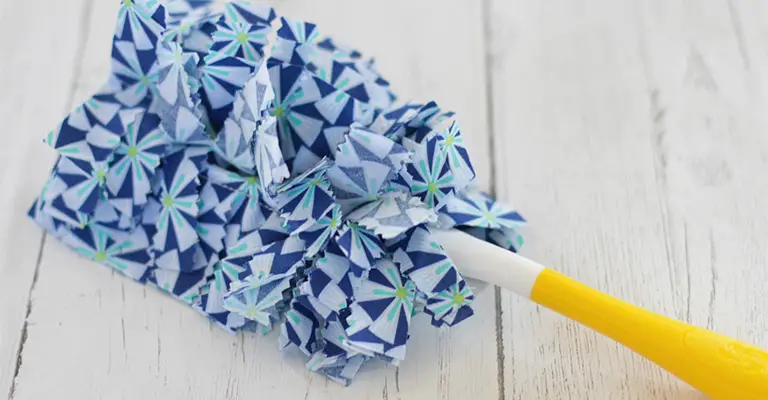
This is our absolute favorite solution for small spaces, especially those requiring a lot of reaches. It only requires a washcloth, a hair elastic, and the appropriate handle.
Whatever handle you choose will depend on the space, whether it is a toothbrush handle, paint stirrer, screwdriver handle, or broom handle.
For example, you should probably use a broom handle if you look at the floor in a narrow space next to waist-high cabinets.
As opposed to the paint stirrer, which is designed for working in small spaces that are only half an arm’s length away.
Trick #3: Toothbrushes
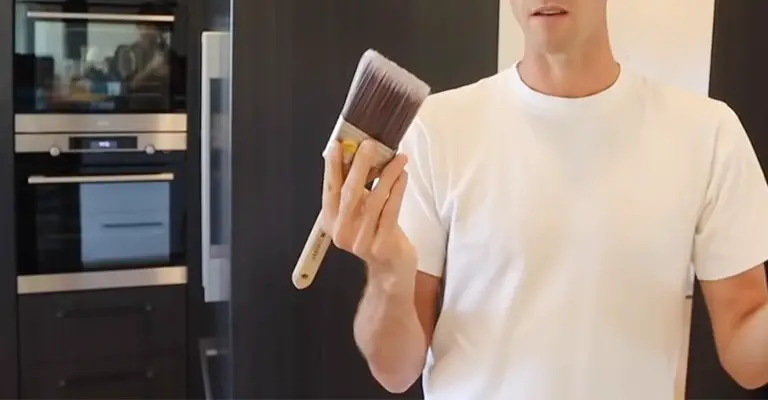
Even very tight spaces, such as around your faucet, are not immune to mold growth. In addition, a sliding door or window frame can be framed with grooves, as we just discussed.
You might miss those small mold spores hiding in corners and grooves of your house if you use cloths or paper towels to clean.
If you want to accomplish this task, a toothbrush soaked in the cleaner will be your best friend. Get a dedicated cleaning brush by purchasing a new toothbrush.
You can soak an old toothbrush head in a small cup of cleaner for five minutes to prime it or an old family toothbrush that is ready to be replaced.
When you reach those tiny crevices that your cloth cannot reach, begin scrubbing. If necessary, rinse your implement and dip it back into the cleaner every few minutes.
At the end of your washcloth, place your implement in the center of it. You will need a rubber band or hair elastic to secure the sides. After your cloth is secure, dip it in a cleaner and get to work.
If the space is saturated, you may also find some success dropping a saturated rag into it. Then, you can manipulate it with your broom handle like a mop to reach your mold-filled space’s tight corners.
The Best Trick: Saturate It
There are two stages to getting rid of mold. The first step is to use a strong cleaner to kill it. The mold in that area will likely stop growing once the spores are killed and the cleaner starts saturating the surface beneath.
For the time being, at least. Finally, cleaning tools remove the dead or mostly dead mold in the second stage.
Plain White Vinegar
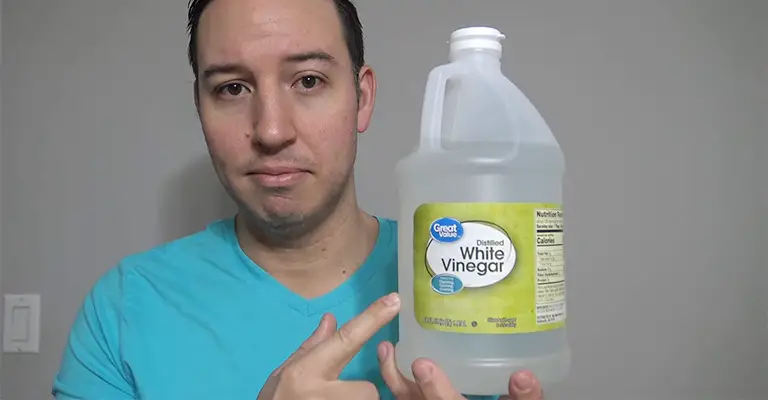
It’s also a good idea to soak areas such as shower tracks in vinegar or organic cleaner before applying the primer. It is easy to clean the narrow part of the window frame if you soak it for 10 to 30 minutes first.
Make sure you reach the grooves of moldy spaces you hate cleaning by placing soaked rags or paper towels there.
Avoid Bleach
It may seem conventional knowledge and fear of mold would suggest bleach for this job but stay away from it. Mold can be combatted with bleach, but it is not very effective.
There are also negative side effects, such as fumes and the possibility of ruining items with color. Try an organic mold cleaner if you’re in a bind or grab your pantry’s white vinegar bottle if you’re in a pinch.
Soak the Area, Kill the Spores
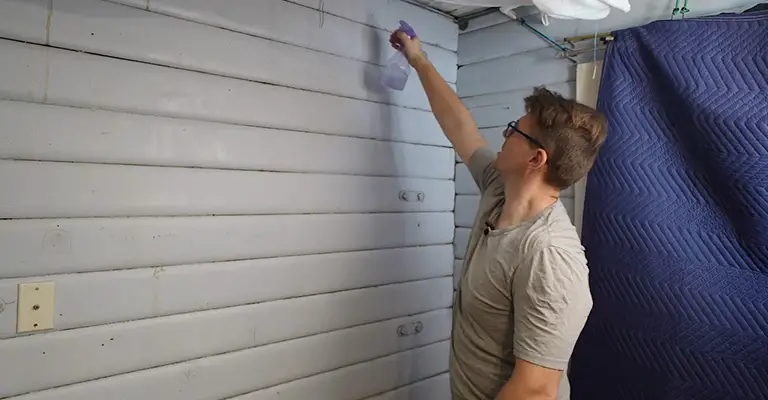
While you try to clean an unreachable area, you may be worried about spreading spores. So, from a distance, pour cleaner onto it.
Even if the appearance of the mold is still unsightly, simply soaking the mold in the right cleaner will kill the spores.
Vinegar Penetrates Porous Materials And Kills Mold At The Roots
When it comes to killing mold, vinegar is an effective alternative to bleach and other harsh chemicals. With vinegar, mold’s membrane can be eradicated below most surfaces because of its acidity.
White vinegar, which is the most acidic, is the best way to kill mold. The vinegar can even be applied directly to linoleum floors or walls to prevent mold from growing.
A spray bottle filled with distilled white vinegar can be used to kill mold when it is not diluted.
Allow the vinegar to penetrate the surface and kill the mold at its root by spraying it over the affected area and letting it sit for an hour. Allow drying after rinsing with warm water and spraying with vinegar.
Pro Tips:
Despite being a weak acid, vinegar is capable of killing surface mold. However, if you want to effectively kill mold and bacteria without stinking after application, I recommend hydrogen peroxide at 3%.
In addition to the exposed wood surfaces, I would spray the milled lumber with a biocide that doesn’t last long. I have seen older units start to grow mushrooms within months of being installed.
In plywood, mushrooms begin to grow in a matter of days after the sheets of veneer are cut. A hot press kills the majority of spores. By using a dehumidifier, you will be able to keep your basement dry.
There is no way for it to grow without moisture. Because you will be sleeping in that area, treat the exposed wood. You may be able to activate mold by exhaling large amounts of moisture.
Final Words
Call for professional assistance in killing mold if you don’t want to take a chance. In most cases, mold issues can be handled by the methods mentioned above.
For mold that is covering a large area or there are multiple mold spots on the walls, it is best to call a professional to ensure the mold is effectively treated.






